Horizontal Lines - Definition, Examples, Quiz, FAQ, Trivia
Learn about horizontal lines with easy explanations, examples, and interactive activities
What is Horizontal?
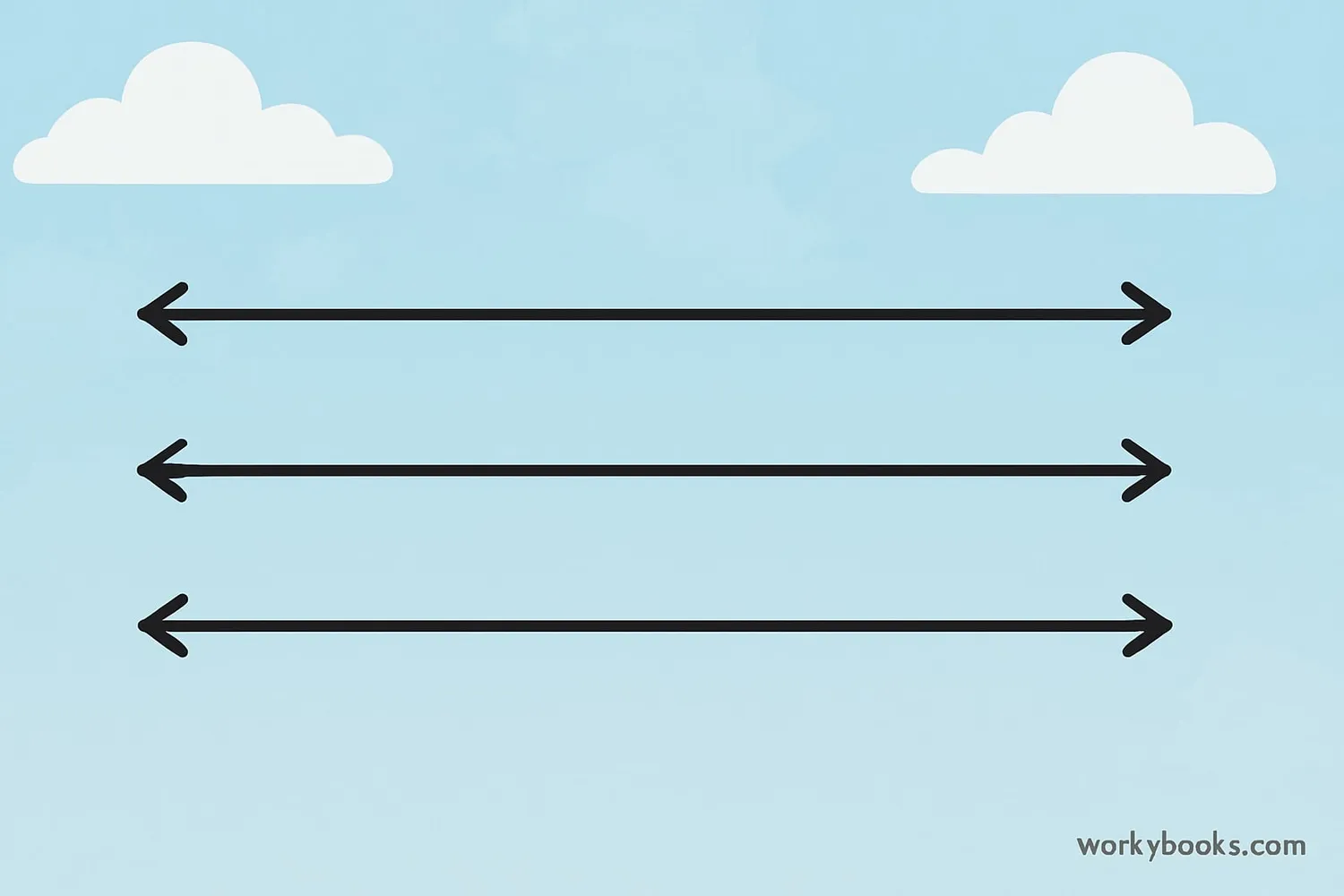
Horizontal refers to something that is parallel to the horizon, or what we might call "side to side" rather than "up and down." In geometry, a horizontal line is straight and flat, going left to right (or right to left) without any tilt.
The word "horizontal" comes from the word "horizon," which is the line where the earth and sky appear to meet. When you look at the horizon, you're looking at a natural horizontal line!
Horizontal lines are important in math because they help us understand shapes, graphs, and patterns. They're also everywhere in our daily lives - from the shelves on a wall to the lines on a piece of paper.
Key Concept
A horizontal line is straight and flat, parallel to the horizon. It has zero slope, meaning it doesn't tilt up or down.
Horizontal vs Vertical
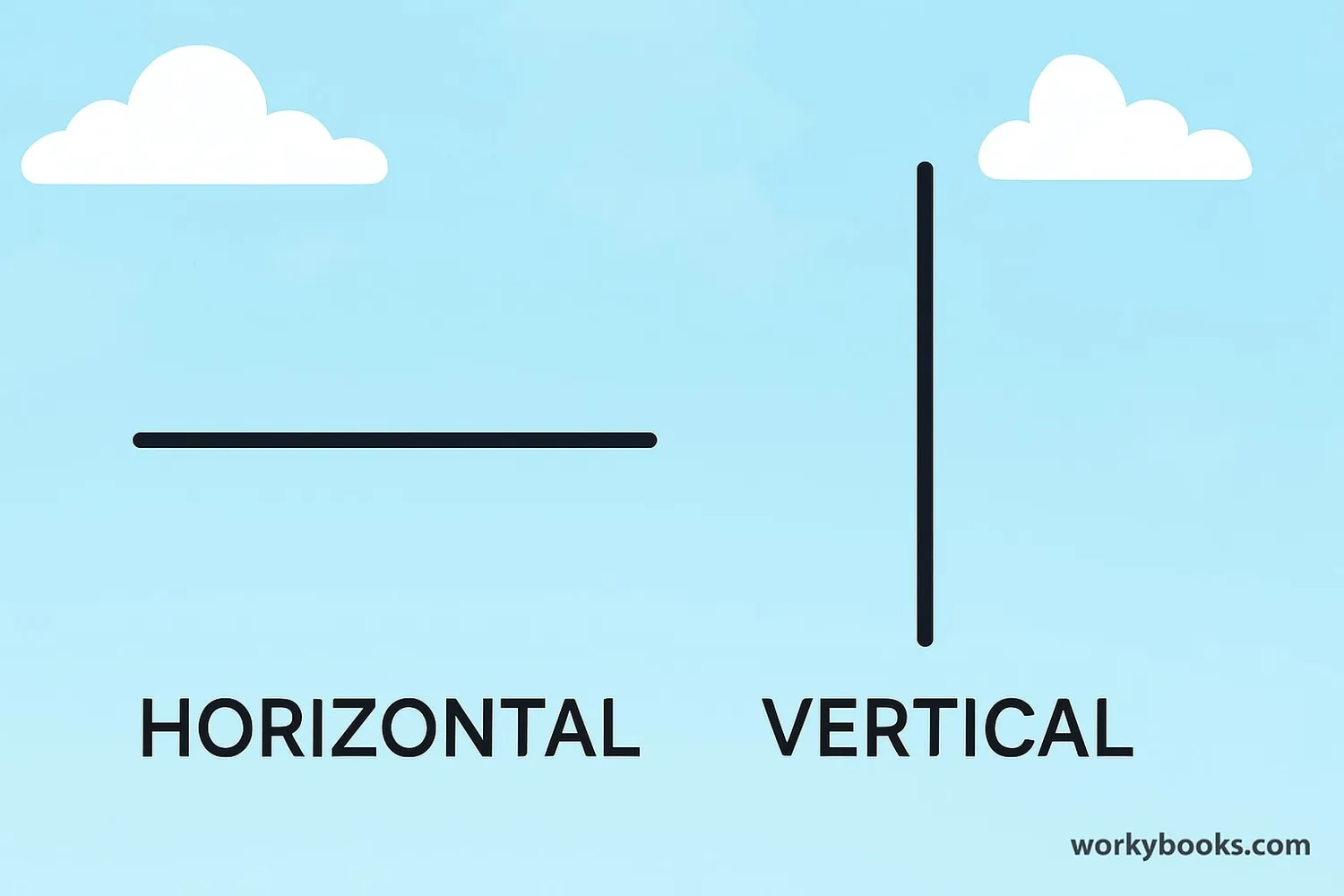
Understanding the difference between horizontal and vertical is important in geometry. While horizontal lines go side to side, vertical lines go up and down, perpendicular to the horizon.
Think about the difference between a lying down person (horizontal) and a standing person (vertical). Or the difference between the floor (horizontal) and a wall (vertical).
Comparison Table
| Feature | Horizontal | Vertical |
|---|---|---|
| Direction | Left to right | Up and down |
| Parallel to | Horizon | Direction of gravity |
| Slope | Zero | Undefined |
| Example | Horizon | Tree trunk |
| On graph | y = constant | x = constant |
Remember
A helpful way to remember: The word "horizontal" contains the word "horizon" - both come from the same root word.
Horizontal Axis
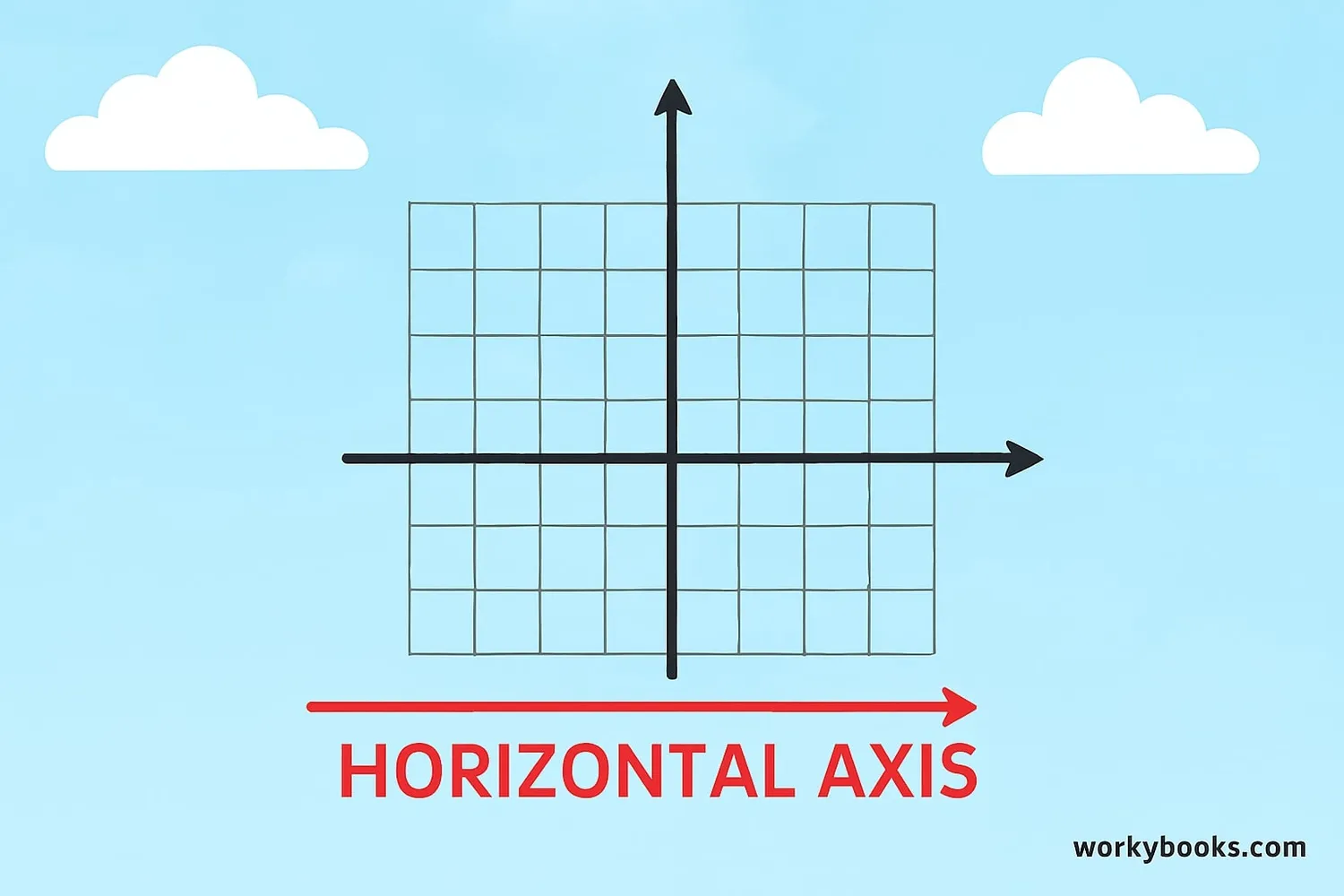
In mathematics, especially in graphing, the horizontal axis is called the x-axis. This is the line that runs left to right on a graph or coordinate plane.
When we plot points on a graph, we first move along the horizontal axis (x-axis) to find the right position, then move vertically to find the exact spot.
The horizontal axis is important because it often represents the independent variable in experiments and data - the thing that we change or control.
Horizontal Line Equation
On a coordinate plane, any horizontal line can be written as y equals some constant number.
Graph Tip
Remember "x to the sky" - the x-axis goes across horizontally, while the y-axis goes up vertically.
Horizontal Line in Geometry
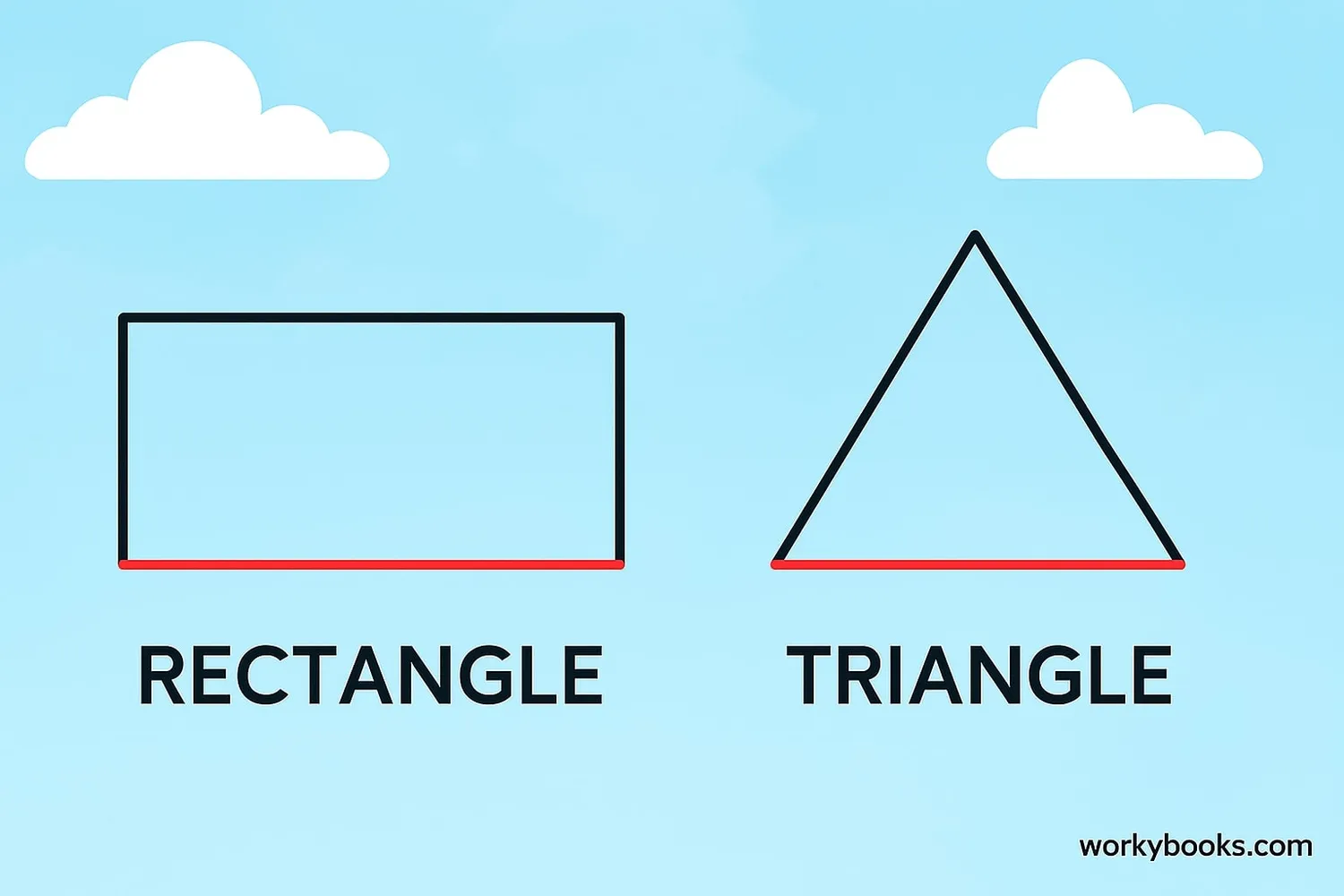
In geometry, horizontal lines play important roles in many shapes and figures. They help create:
• Rectangles and squares - These shapes have two pairs of parallel sides, with the top and bottom being horizontal lines
• Triangles - Some triangles have a horizontal base
• Graphs and charts - Horizontal lines help us read and understand data
Horizontal lines have a special mathematical property: their slope is always zero. This is because they don't rise or fall as they move from left to right.
Geometry Fact
In coordinate geometry, all horizontal lines have equations in the form y = c, where c is a constant number.
Real-World Examples
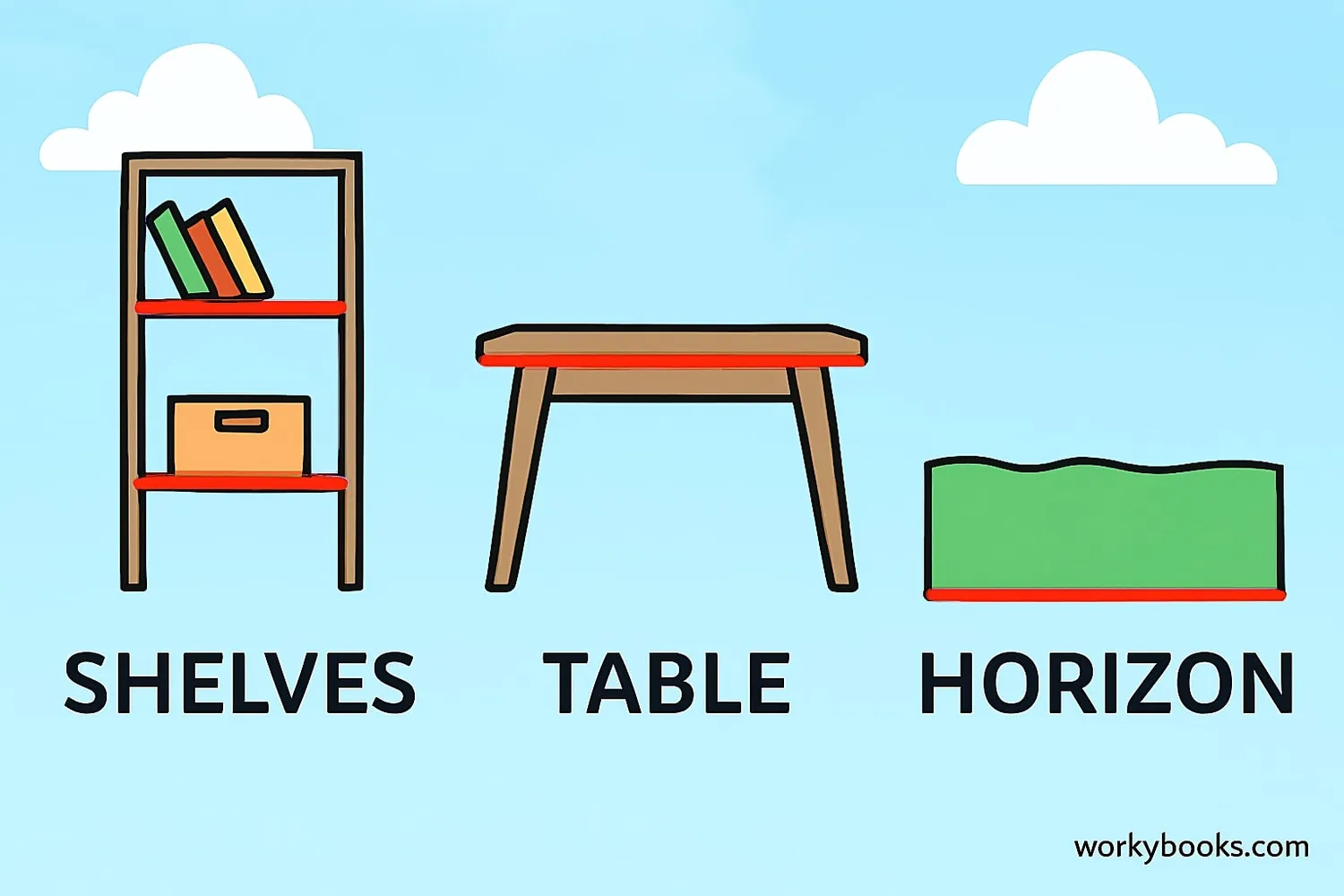
Horizontal lines are all around us in everyday life. Here are some common examples:
1. The horizon - Where the sky meets the land or sea
2. Shelves - The flat surfaces where we place books and objects
3. Tables and desks - Their flat surfaces are horizontal
4. Steps on a staircase - Each step is a horizontal surface
5. Lines on ruled paper - The lines we write on are horizontal
6. Bridge decks - The road surface of a bridge is horizontal
7. Baseball batter's box - The lines marking the box include horizontal elements
Look around you right now - how many horizontal lines can you spot in your room?
Observation Challenge
Find five horizontal lines in your environment. Notice how they provide stability and balance to objects.
Horizontal Lines Quiz
Test your knowledge about horizontal lines with this 5-question quiz. Choose the correct answer for each question.
Frequently Asked Questions
Here are answers to common questions about horizontal lines:
Math Trivia
Discover interesting facts about horizontal lines and geometry:
Ancient Measurements
The concept of horizontal lines was crucial to ancient architects. Egyptian builders used water-filled trenches to create level foundations for pyramids, making use of the natural horizontal property of water surfaces.
Human Perception
Studies show that humans can detect horizontal lines more accurately than lines at other orientations. This might be because our visual system evolved to prioritize the horizon for navigation and understanding our environment.
In Art Composition
Artists often use horizontal lines to create a sense of calm and stability in their paintings. Seascapes and landscapes frequently feature strong horizontal elements to represent the horizon and create peaceful compositions.
Not Always Flat
While we think of the horizon as a straight horizontal line, it's actually slightly curved due to Earth's spherical shape. This curvature becomes noticeable over long distances, which is why we can't see distant ships entirely on the ocean.


